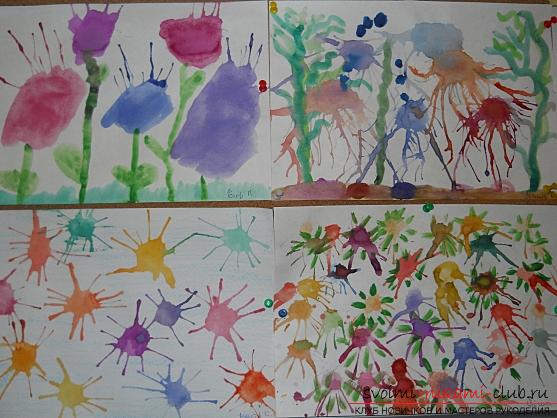
To learn the child to draw the basic nonconventional drawing techniques in a kindergarten will help
Basic non-traditional drawing techniques inkindergarten is a compulsory occupation. They are interesting to children of all ages and allow them to fully reveal their potential during the creative process. Work on creating drawings is not difficult, so kids are happy to do it, gaining skills in working with materials and getting acquainted with the painting. In every kindergarten, without exception, there are drawing lessons that introduce children to fine arts, teach them to work with various tools and materials, thereby developing certain skills, developing possible abilities, a sense of beauty. Drawing is a unique activity that brings up many positive qualities in the child, such as perseverance and patience, mindfulness, imagination, the ability to think and much more. All of them are very useful for the baby in later life. Along with the traditional methods of depicting an object or object on paper (drawing with pencils, brush and paints, gouache), non-traditional techniques are used that attract the attention of small fidgets more. For each age group they have their own. In this article we will get acquainted with the main non-traditional drawing techniques in kindergarten used in each individual group. Unconventional drawing techniques in younger groups Given the age of the toddlers in these groups, they can not yet master the too complicated methods used in the visual arts, and only begin to get acquainted with the world of painting. Therefore, in drawing lessons for them, it is important to work with the simplest techniques, which include stamping and drawing with hands (fingers, palms). Let's consider each of these methods separately. Drawing palms and fingers 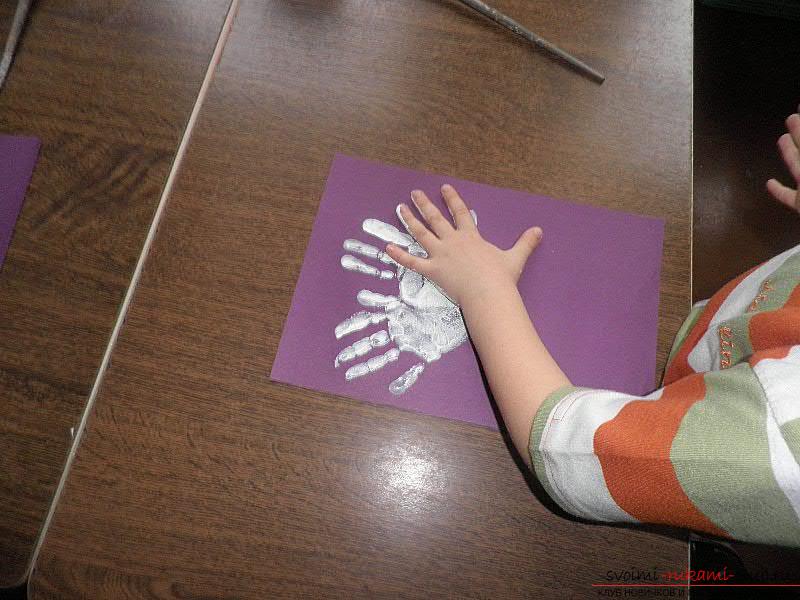 The essence of this unconventional technique iscreating a drawing with the help of hands. Thus, you can draw interesting cute little men, octopuses, trees and flowers, the sun and much more. To work you need sheets of paper, paint (watercolor or gouache), napkins for wiping hands, a brush. The paint is applied to the hands by dipping them in it or using a brush and then, leaving the prints on paper in different sequences, the children create amazing drawings. Punching
The essence of this unconventional technique iscreating a drawing with the help of hands. Thus, you can draw interesting cute little men, octopuses, trees and flowers, the sun and much more. To work you need sheets of paper, paint (watercolor or gouache), napkins for wiping hands, a brush. The paint is applied to the hands by dipping them in it or using a brush and then, leaving the prints on paper in different sequences, the children create amazing drawings. Punching 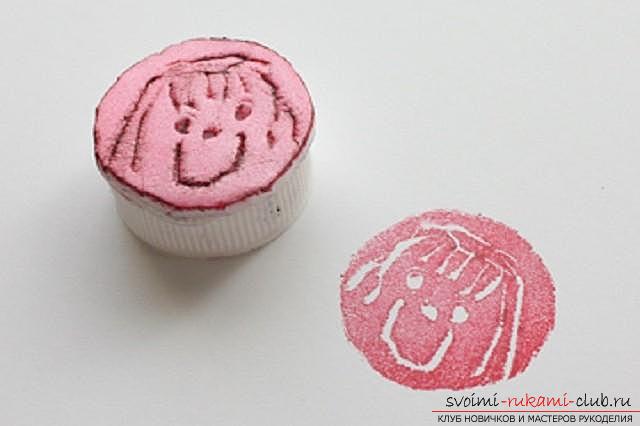 Since little kids are always happythey stamp everything they can, this drawing technique they always like. With the help of a pre-fabricated stamp (this could be the bottom of a plastic bottle, a lid and so on, covered with paint), prints are applied to the paper, creating a pattern that can later be supplemented. Techniques of unconventional drawing in middle groups At this age, children use the previous knowledge and techniques that they are still interested in and learn how to work with other types of non-traditional drawing. These include printing, nitcografiya and tychok hard brush. Printing
Since little kids are always happythey stamp everything they can, this drawing technique they always like. With the help of a pre-fabricated stamp (this could be the bottom of a plastic bottle, a lid and so on, covered with paint), prints are applied to the paper, creating a pattern that can later be supplemented. Techniques of unconventional drawing in middle groups At this age, children use the previous knowledge and techniques that they are still interested in and learn how to work with other types of non-traditional drawing. These include printing, nitcografiya and tychok hard brush. Printing 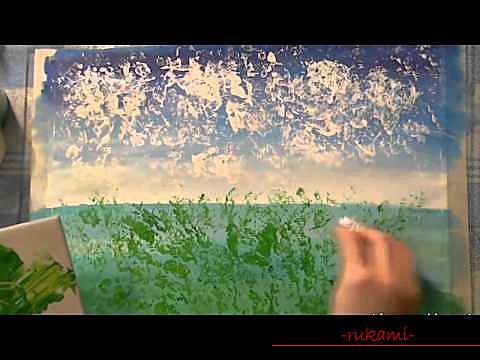 This technique implies the creationdrawing by leaving prints with various objects. For this purpose, a piece of paralon or polystyrene, a crumpled paper, a tampon made of cotton wool, cotton buds, leaves of trees or plants and so on. Well, of course, you will need paint (watercolor or gouache), a pad of ink and paper. The essence of the process is as follows: the ink pad is impregnated with the desired color of the ink, then pressed to it an object with which the pattern will be created and leave its prints on paper. The sequence of prints can be arbitrary or strictly planned by the tutor. Drawing in any case will turn out to be unordinary and interesting. Nitkografiya You can work with this technique in two ways. For each of them you will need paint with a brush, a container for them, threads and paper. In the first case, the thread is applied to the paint of any color you like. The paper needs to be folded in half. On one side is laid out the colored thread, and the other is covered. Then the thread is stretched. When a child unfolds a sheet of paper, there is some image that he can then draw at his discretion.
This technique implies the creationdrawing by leaving prints with various objects. For this purpose, a piece of paralon or polystyrene, a crumpled paper, a tampon made of cotton wool, cotton buds, leaves of trees or plants and so on. Well, of course, you will need paint (watercolor or gouache), a pad of ink and paper. The essence of the process is as follows: the ink pad is impregnated with the desired color of the ink, then pressed to it an object with which the pattern will be created and leave its prints on paper. The sequence of prints can be arbitrary or strictly planned by the tutor. Drawing in any case will turn out to be unordinary and interesting. Nitkografiya You can work with this technique in two ways. For each of them you will need paint with a brush, a container for them, threads and paper. In the first case, the thread is applied to the paint of any color you like. The paper needs to be folded in half. On one side is laid out the colored thread, and the other is covered. Then the thread is stretched. When a child unfolds a sheet of paper, there is some image that he can then draw at his discretion. 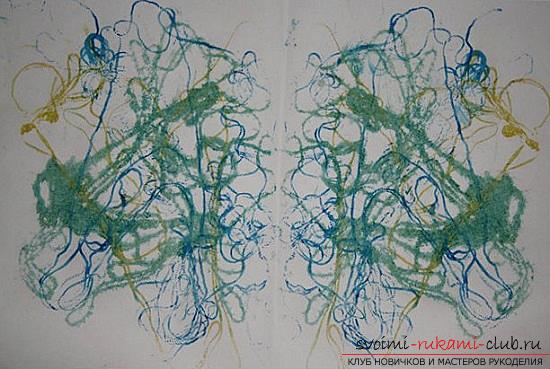 The second method implies the use of glue. The drawing is created by gluing the threads to the paper in the form of an object.
The second method implies the use of glue. The drawing is created by gluing the threads to the paper in the form of an object. 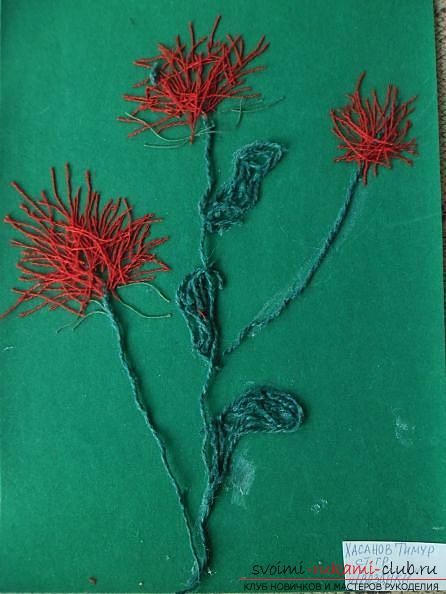 Point with a stiff brush
Point with a stiff brush 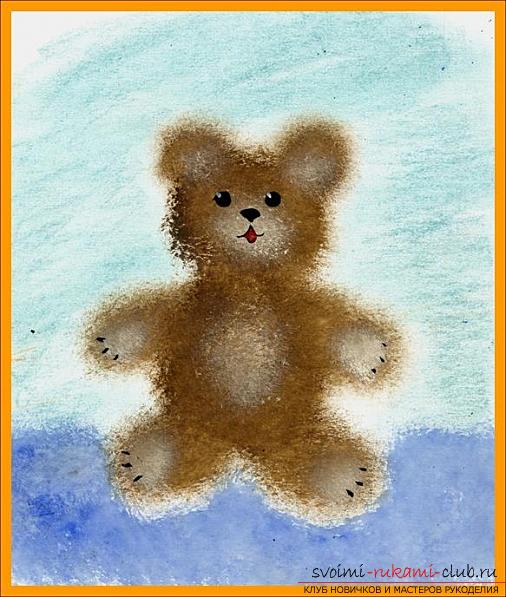 For this technique, the child will need helpadult. Before starting to work for children, adults prepare a sheet of paper on which the contours of an object or object are drawn. Also need a brush (hard) and paint. On the left side to the right on the contour pins are made with a brush with the necessary paint. It is important that there are no spaces left. Then, in the same way, only arbitrarily, it is painted over the middle of the picture. Techniques of non-traditional drawing in older groups At this age, children are able to show their abilities, using more sophisticated methods of non-traditional drawing. There are a lot of them, so we will consider only some of them. A drawing created using watercolors on a candle
For this technique, the child will need helpadult. Before starting to work for children, adults prepare a sheet of paper on which the contours of an object or object are drawn. Also need a brush (hard) and paint. On the left side to the right on the contour pins are made with a brush with the necessary paint. It is important that there are no spaces left. Then, in the same way, only arbitrarily, it is painted over the middle of the picture. Techniques of non-traditional drawing in older groups At this age, children are able to show their abilities, using more sophisticated methods of non-traditional drawing. There are a lot of them, so we will consider only some of them. A drawing created using watercolors on a candle 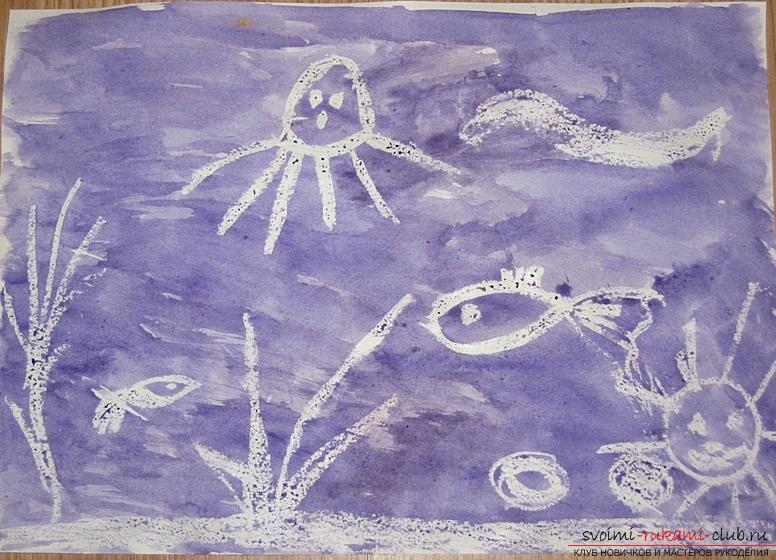 For work you need a candle or crayons wax, sheetpaper (dense), watercolor paint, brush. On paper, children depict any drawing with a candle or crayons. Then the entire sheet is painted with watercolor. Pre-waxed pattern will remain unpainted. Kleksografiya
For work you need a candle or crayons wax, sheetpaper (dense), watercolor paint, brush. On paper, children depict any drawing with a candle or crayons. Then the entire sheet is painted with watercolor. Pre-waxed pattern will remain unpainted. Kleksografiya  A blot is an integral part of every child. Therefore, this technique is very close to the children in spirit. For work you need paper, paintbrush and paint. The paint is drawn on the brush and drips from the height onto the paper. By turning the sheet or you can blow it, the blob spreads out, forming an interesting image. We met only a part of the basic non-traditional drawing techniques in kindergarten. In fact, there are many more.
A blot is an integral part of every child. Therefore, this technique is very close to the children in spirit. For work you need paper, paintbrush and paint. The paint is drawn on the brush and drips from the height onto the paper. By turning the sheet or you can blow it, the blob spreads out, forming an interesting image. We met only a part of the basic non-traditional drawing techniques in kindergarten. In fact, there are many more.




